16 October 2013
The Great Khan owns an atlas in which are gathered the maps of all the cities: those whose walls rest on solid foundations, those which fell in ruins and were swallowed up by the sand, those that will exist one day and in whose place now only hares’ holes gape. […] The catalogue of forms is endless: until every shape has found its city, new cities will continue to be born.
Italo Calvino, Invisible Cities (introduction to chapter 9)
Palazzo Zenobio, or Collegio Armeno, is a fairly isolated place, far away from the tourist traps of the city. Its gray walls, encrusted with old plaster, preserve only the memory of the magnificence they had in the 17th century. The atmosphere is entrancing, the palazzo is steeped in a sweet and melancholy sense of desolation. It is one of the places in Venice I love most. Along one side of the building runs a broad swathe of unkempt grass: onto it faces the washhouse, a massive square block devoid of ornament and decoration, whose unassuming appearance is fully in keeping with the function it performed in the past. Today this is the seat of the Icelandic Pavilion, a modest former laundry, a bare, austere and essential setting. And it is precisely here that the Icelandic artist Katrín Sigurðardóttir has decided to locate her new sculptural installation, entitled Foundation.
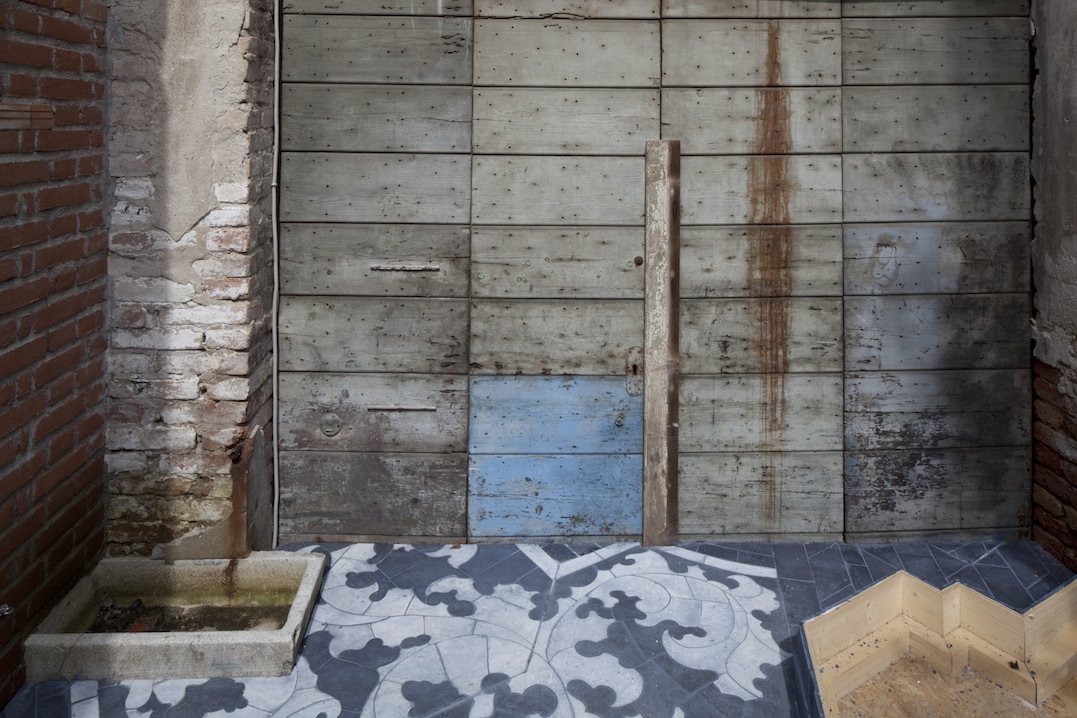
The project, curated by Ilaria Bonacossa and Mary Ceruti, consists of a large, raised floor covered with tiles of baroque inspiration, made by hand by the artist herself and her assistants. The floating surface extends beyond the perimeter of the washhouse: the tiles break through the building’s walls, their black-and-white floral motifs re-creating a beautiful geometric pattern on the other side. The area of the baroque-style paving reproduces the plan of a traditional 18th-century pavilion: architecture that struggles to fit inside the building, breaking up into various external offshoots and invading part of the surrounding territory. The floating surface constitutes the foundation of an imaginary pavilion (the model is that of the national pavilions in the Giardini): the solidity of the base alludes to an absence—that of an “official” Icelandic pavilion at the Biennale—while the preciosity of the craftsmanship disguises a condition of marginalization—that of a remote land, located in the extreme north of Europe, recovering from the disastrous bankruptcy of 2008.
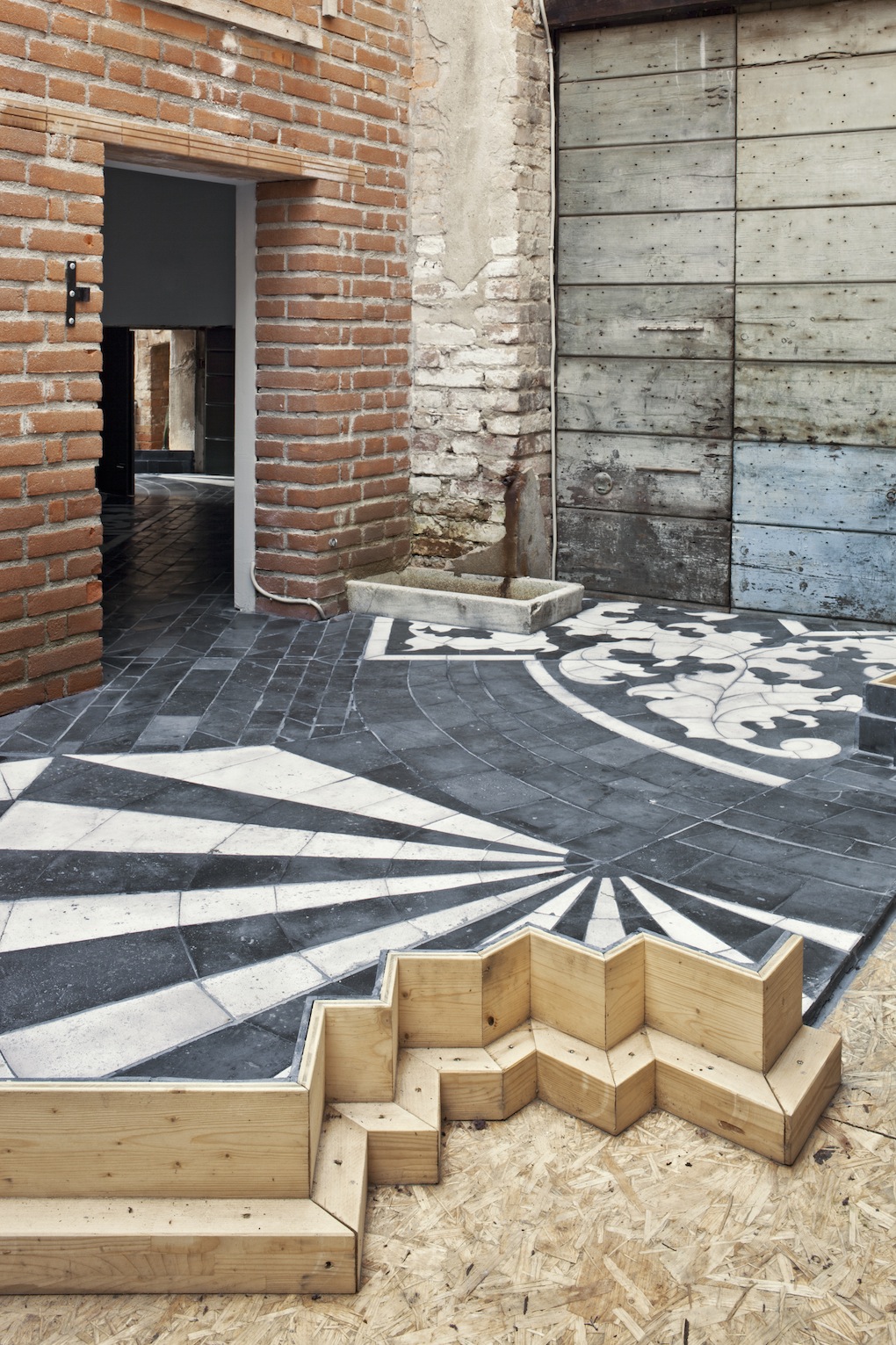
On close examination, the form of the sculpture recalls that of Iceland itself. The jagged perimeter of the paving evokes the indented coastline of the island. The thickness of the surface, to which access is provided by steps, is reminiscent of the ice with which it is covered. The artist has installed an imperfect reproduction of her country in the 17th-century structure; the arabesques of the floor’s decoration trace an impossible route on a fictitious, imagined map. To explore the surface of the sculpture it is necessary to go up and down steps, stoop to pass through low doors, climb a staircase that leads to the terrace—and enjoy, from there, an “aerial” view. The floor of Foundation, in a certain sense, emerges from an “emotional” cartographic impulse—the kind Giuliana Bruno describes in her Atlas of Emotion: Katrín Sigurðardóttir recounts Iceland through absence, separation and inadequacy—all elements of her personal topography.
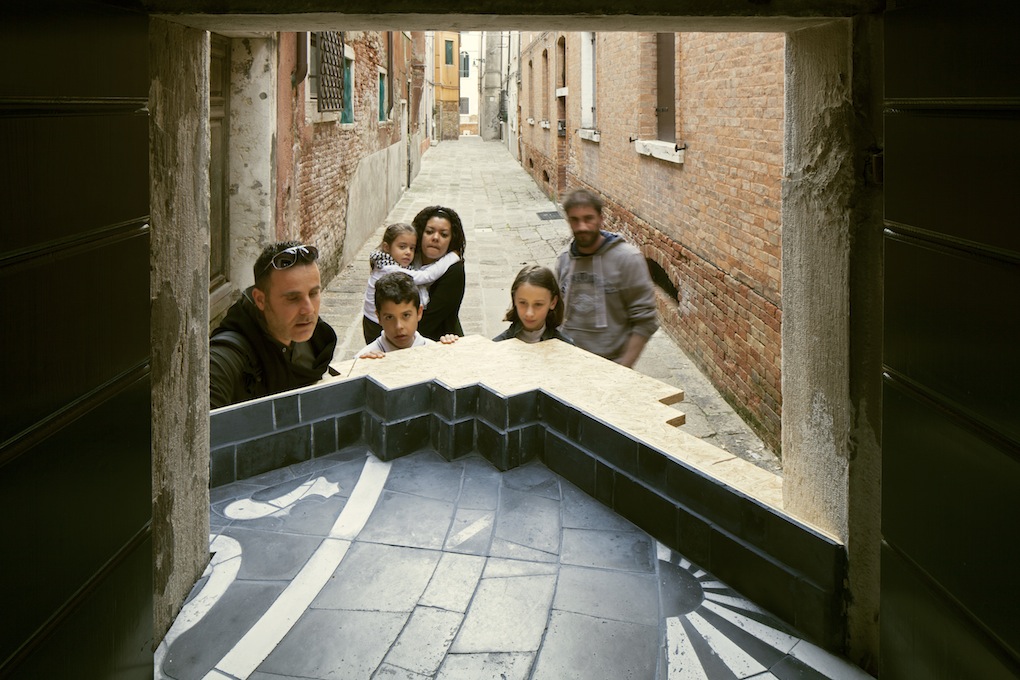
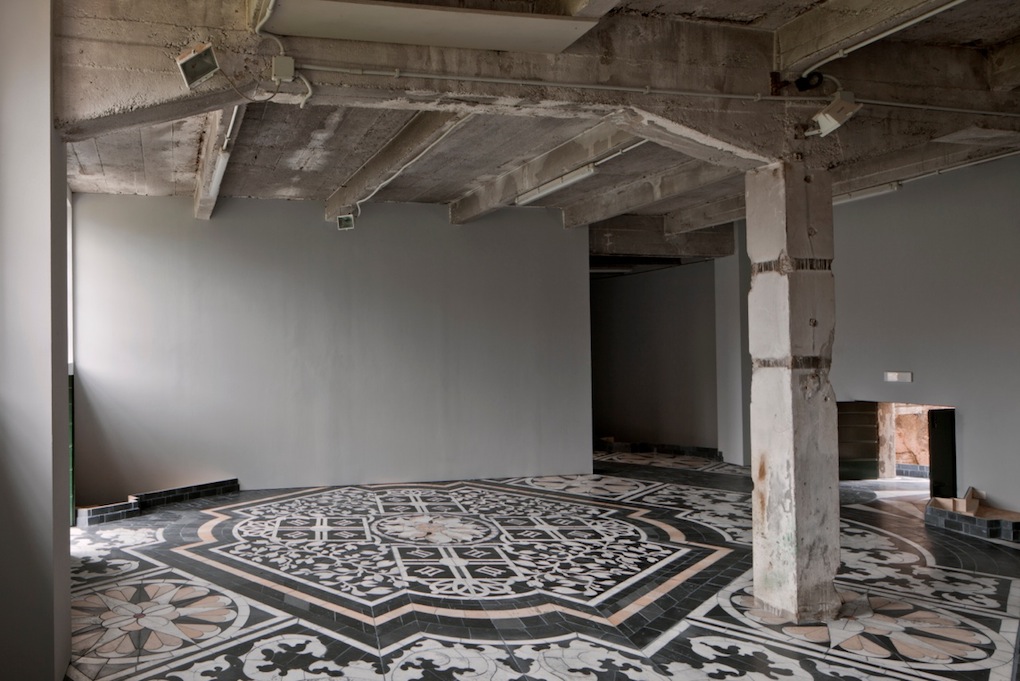
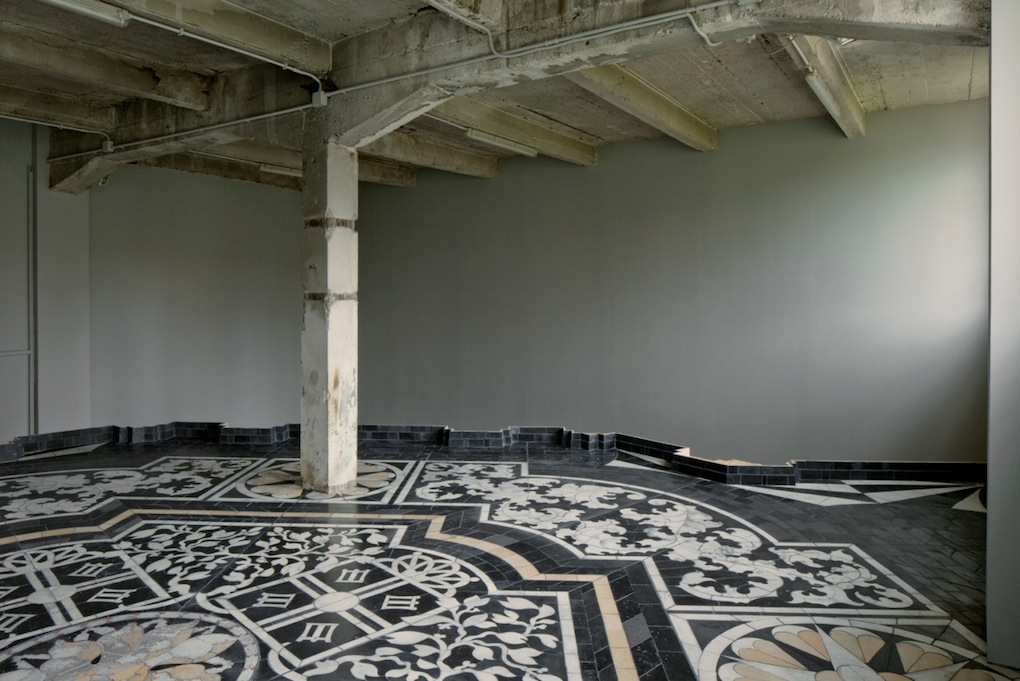
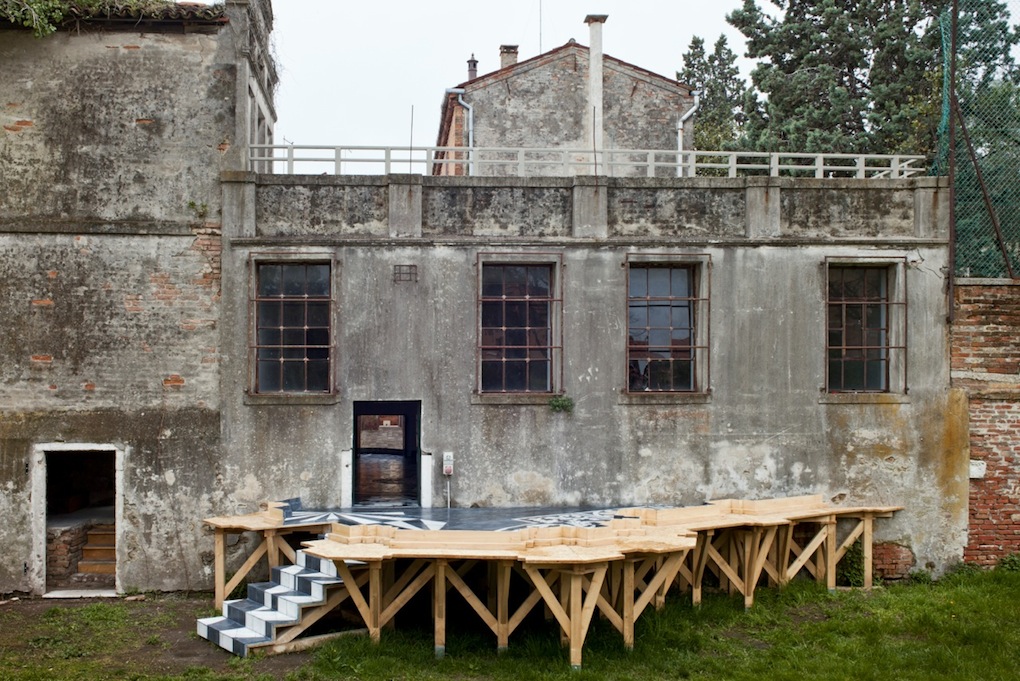
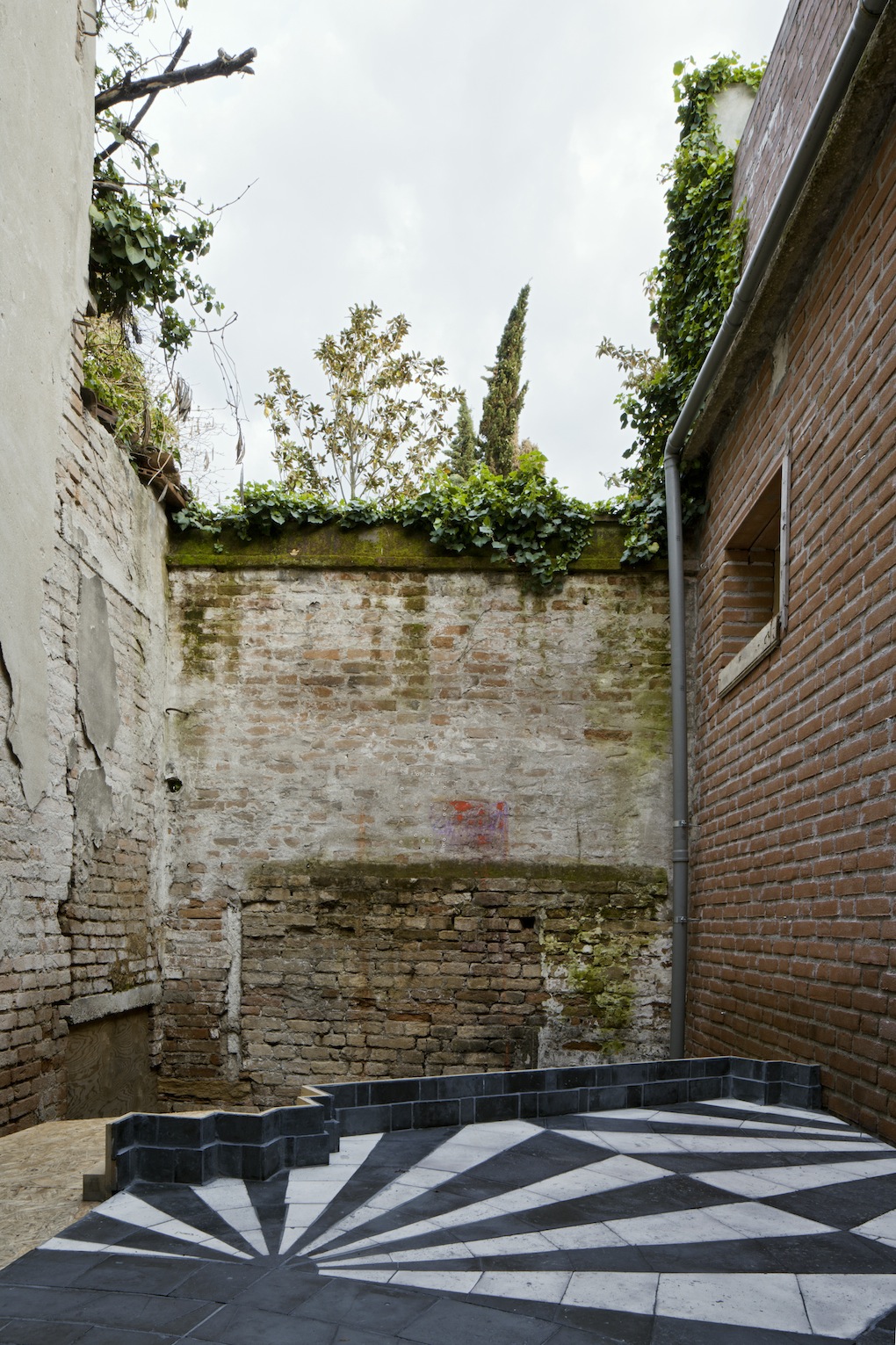
Follow Federico Florian on Google+, Facebook, Twitter.
By the same author:
ArtSlant Special Edition – Venice Biennale
Notes on ‘The Encyclopedic Palace’. A Venetian tour through the Biennale
The national pavilions. An artistic dérive from the material to the immaterial
The National Pavilions, Part II: Politics vs. Imagination
The Biennale collateral events: a few remarks around the stones of Venice